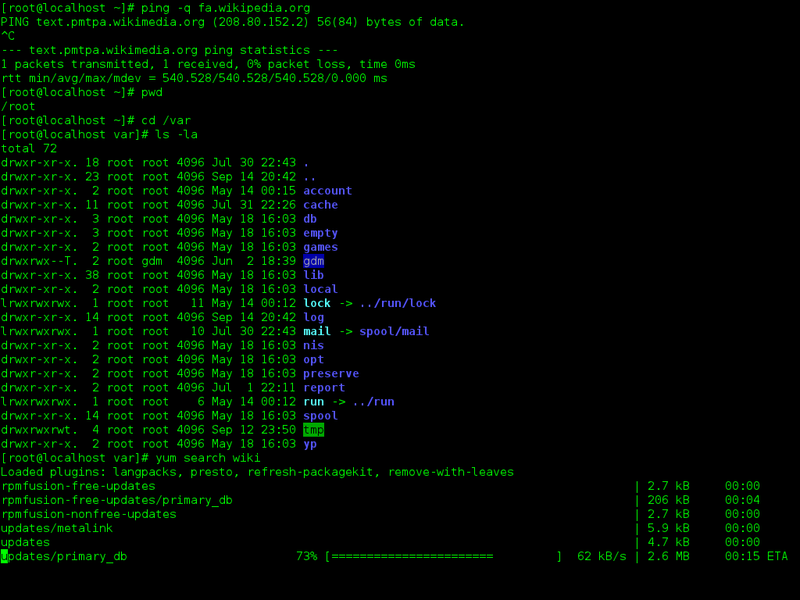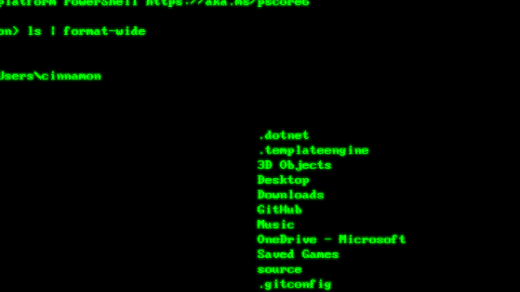Welcome to the Cloud Computing Learning Path, where we embark on a journey to unlock the power of the cloud and reshape the way we work and innovate. In this article, we will explore the ins and outs of cloud computing, equipping you with the essential knowledge and skills needed to navigate this rapidly evolving landscape. Let’s dive into the world of cloud computing and discover its endless possibilities together.
Assessing your foundational knowledge
One key area to focus on is Linux training. Linux is widely used in the cloud computing industry and having a strong grasp of its fundamentals will give you a competitive edge. Linux is an open-source operating system that powers many cloud platforms, including Amazon Web Services (AWS), Microsoft Azure, and Google Cloud Platform.
By gaining proficiency in Linux, you will be better equipped to navigate the world of cloud computing. Linux training will enable you to understand concepts such as virtualization, computer networks, and server management.
Additionally, Linux offers a robust ecosystem of tools and resources for cloud computing, making it an essential skill for future engineers and IT professionals. Learning Linux will not only enhance your understanding of cloud architecture but also broaden your career prospects.
Whether you are a beginner or already have some experience in cloud technologies, investing in Linux training is a wise choice. It will provide you with the foundational knowledge needed to excel in the field of cloud computing. So, take the first step on your learning path and start exploring the world of Linux today.
Understanding the basics of cloud computing
Cloud computing is based on the concept of virtualization, which creates virtual instances of computer hardware and software resources. These resources are then shared among multiple users, increasing efficiency and reducing costs.
There are three main types of cloud computing: Infrastructure as a Service (IaaS), Platform as a Service (PaaS), and Software as a Service (SaaS). IaaS provides virtualized infrastructure resources, such as servers and storage, allowing users to build and manage their own applications. PaaS provides a platform for developers to build, test, and deploy applications without worrying about infrastructure management. SaaS allows users to access applications and software over the internet, eliminating the need for installation and maintenance.
Popular cloud computing providers include Amazon Web Services (AWS), Microsoft Azure, and Google Cloud Platform. These platforms offer a wide range of services and tools for developers, engineers, and IT professionals.
By understanding the basics of cloud computing, individuals can gain a competitive edge in the IT industry. Whether it is developing web applications, managing data centers, or ensuring the security of cloud-based systems, cloud computing knowledge is crucial in today’s digital landscape. Taking Linux training courses can provide individuals with the necessary skills to excel in this field and open up various career opportunities.
So, if you are interested in pursuing a career in Linux training, it is essential to familiarize yourself with cloud computing and its various components. With the increasing demand for cloud-based solutions, having a strong understanding of cloud computing can significantly enhance your professional prospects.
Learning about Linux and networking

In order to excel in cloud computing, it is crucial to have a strong understanding of Linux and networking. These skills are essential for effectively managing and optimizing cloud infrastructure.
Linux is an open-source operating system that is widely used in the cloud computing industry. Learning Linux will enable you to navigate and utilize the Linux command line, as well as configure and troubleshoot networking components.
Networking knowledge is equally important, as it forms the backbone of cloud computing. Understanding network protocols, IP addressing, and subnetting will enable you to design and implement efficient and secure cloud networks.
Having a solid foundation in Linux and networking will also prepare you for pursuing certifications such as the Linux Professional Institute Certification (LPIC) and the CompTIA Network+.
To gain Linux and networking skills, there are various options available. You can enroll in online courses specifically designed for cloud computing and Linux training. These courses often provide hands-on exercises and real-world scenarios to enhance your practical knowledge.
Another option is to join online communities dedicated to Linux and networking. These communities offer forums, blogs, and webinars where you can interact with experts and fellow learners, exchanging knowledge and experiences.
Additionally, books and video tutorials can be valuable resources for self-study. They provide in-depth explanations and demonstrations of Linux and networking concepts, allowing you to learn at your own pace.
By investing time and effort in learning Linux and networking, you will be equipped with the necessary skills to thrive in the cloud computing industry. Whether you aspire to be a cloud engineer, architect, or administrator, these foundational skills are essential for success.
Exploring AWS and how it works
AWS, or Amazon Web Services, is a cloud computing platform that provides a wide range of services and tools for businesses and individuals. It operates on a pay-as-you-go model, allowing users to only pay for the resources they actually use.
One of the main benefits of AWS is its flexibility. It offers a variety of services, including Platform as a Service (PaaS) and Software as a Service (SaaS), which allow users to easily build, deploy, and manage applications without the need for extensive infrastructure.
AWS works by leveraging the power of the internet and computer networks to deliver computing resources on demand. It operates through a global network of data centers, ensuring high availability and scalability.
For those interested in learning AWS, taking Linux training is a great starting point. Linux is a popular operating system used by many cloud providers, including AWS. By gaining proficiency in Linux, individuals can better understand the underlying concepts and technologies behind cloud computing.
Taking Linux training can also open doors to various career opportunities in the field of information technology and computer science. With the increasing demand for cloud engineers and architects, having the necessary skills and knowledge can give individuals a competitive edge in the job market.
Deepening understanding through webinars and whitepapers
Deepen your understanding of cloud computing with our webinars and whitepapers. These resources are designed to guide you on your Linux training journey, providing valuable insights and knowledge. Our webinars offer interactive sessions where you can engage with experts, ask questions, and learn from real-world examples. Whitepapers, on the other hand, provide in-depth articles that delve into specific topics, giving you a comprehensive understanding of cloud computing. Whether you’re an engineer, IT professional, or simply interested in learning more about this technology, our webinars and whitepapers are a valuable resource. Expand your knowledge and stay up-to-date with the latest trends and advancements in cloud computing.
Join our community of learners and take your skills to the next level.
Referencing architecture through AWS Architecture Center
The AWS Architecture Center is a valuable resource for referencing architecture in cloud computing. Whether you’re a beginner or an experienced professional, this platform offers a comprehensive learning path to enhance your understanding of AWS architecture.
By exploring the AWS Architecture Center, you can gain insight into how different components of a cloud infrastructure work together to create a scalable and secure environment. This knowledge is essential for anyone interested in pursuing a career in Linux training or looking to advance their skills in the field of cloud computing.
Within the Architecture Center, you’ll find a wealth of educational materials, including whitepapers, reference architectures, and best practices. These resources cover various topics such as computer networking, information technology, data centers, and server computing.
Additionally, the AWS Architecture Center provides guidance on privacy and security considerations, ensuring that you have the necessary knowledge to protect sensitive data and maintain compliance with regulatory requirements.
Whether you’re a software engineer, computer scientist, or IT professional, the AWS Architecture Center offers a practical approach to learning cloud architecture. With its emphasis on hands-on experience and real-world examples, you can develop the procedural knowledge and application skills needed to excel in this field.
Furthermore, the Architecture Center provides a platform for community engagement, allowing you to connect with other professionals and share insights and experiences. This collaborative environment fosters a culture of learning and encourages continuous improvement.
With its vast array of resources and user-friendly interface, the AWS Architecture Center is the ideal starting point for anyone looking to dive into the world of cloud computing. Whether you’re interested in infrastructure as a service, web services, or agile software development, this platform will equip you with the necessary knowledge and skills to succeed.
Take advantage of the AWS Architecture Center today and embark on your cloud computing learning journey. With its comprehensive resources and supportive community, you’ll be well on your way to becoming an accomplished architect in the world of cloud computing.
Staying updated with APN and AWS blogs

To stay updated with the latest advancements in cloud computing, it is essential to follow the APN and AWS blogs. These blogs provide valuable insights, tips, and best practices for utilizing the power of the cloud effectively. By regularly reading these blogs, you can stay informed about new features, services, and updates from Amazon Web Services.
The APN (Amazon Partner Network) blog focuses on the AWS partner ecosystem and provides information on partner solutions, programs, and success stories. This is particularly useful for professionals working in the field of cloud computing, as it allows them to discover innovative solutions and learn from real-world experiences.
On the other hand, the AWS blog covers a wide range of topics related to cloud computing, including architecture, security, machine learning, and more. It provides in-depth articles, tutorials, and case studies that can help you enhance your understanding of AWS services and make the most out of them.
By regularly reading these blogs, you can stay up to date with the latest trends and developments in the cloud computing industry. This knowledge can be invaluable for professionals looking to enhance their skills and stay competitive in the job market.
In addition to following the APN and AWS blogs, it is also recommended to explore other educational resources related to cloud computing. Online courses, webinars, and conferences can provide opportunities to learn from industry experts and gain hands-on experience with different cloud technologies.
By investing time and effort in continuous learning, you can build a strong foundation in cloud computing and position yourself for exciting career opportunities in this rapidly evolving field. So, start following the APN and AWS blogs today and embark on your cloud computing learning path.
Understanding the AWS Well-Architected Framework
The AWS Well-Architected Framework is a set of best practices and guidelines for designing and building secure, scalable, and efficient cloud-based applications. It provides a structured approach to help organizations understand and implement the core principles of cloud architecture.
By following the Well-Architected Framework, businesses can ensure that their applications are reliable, cost-effective, and performant. It covers various areas such as operational excellence, security, reliability, performance efficiency, and cost optimization.
One of the key benefits of the framework is that it helps organizations identify potential issues and risks early in the design process, enabling them to make informed decisions and mitigate potential problems. This can save time and resources in the long run.
In order to fully understand and implement the AWS Well-Architected Framework, it is important to have a solid understanding of cloud computing and the AWS platform. Taking Linux training can be a valuable step in this learning path, as Linux is widely used in cloud environments and understanding it can provide a strong foundation for working with AWS.
Linux training courses cover various topics such as Linux fundamentals, command line usage, system administration, and networking. These skills are essential for effectively working with the AWS platform and implementing the Well-Architected Framework.
In addition to Linux training, it is also beneficial to have a good understanding of other related topics such as computer networking, data center operations, and server management. These areas of knowledge will enhance your ability to design and deploy scalable and reliable cloud-based solutions.
Learning cloud computing from scratch
![]()
By taking Linux training, you will learn about computer networks, data centers, and servers, which are fundamental components of cloud computing. This knowledge will help you understand how data is stored, processed, and accessed in the cloud. Additionally, you will gain insights into the importance of privacy and security in cloud environments, ensuring that sensitive information is protected.
Moreover, Linux training will also introduce you to essential concepts in computer programming and software engineering. These skills are crucial for building and managing applications in the cloud. You will learn about different programming languages, such as Scratch and Microsoft Windows, as well as application software and web services.
Furthermore, the training will provide you with a deeper understanding of the World Wide Web and its role in cloud computing. You will learn how web applications and web conferencing facilitate collaboration and communication in cloud environments. This knowledge will enable you to leverage these tools effectively in your cloud computing journey.
Taking Linux training is not only about acquiring technical skills; it is also about developing a mindset for agile software development and continuous learning. Cloud computing is a rapidly evolving field, and staying updated with the latest advancements is crucial. Linux training will instill in you a curiosity for research and a passion for innovation.
Obtaining cloud certifications
To embark on your cloud computing learning path, consider starting with Linux training. Linux is widely used in cloud environments and having a strong foundation in this operating system will greatly benefit your career. Linux training will equip you with the necessary skills to navigate and manage cloud infrastructures effectively.
In addition to Linux training, it’s important to familiarize yourself with other key concepts and technologies related to cloud computing. This includes understanding computer networks, data centers, and servers. A solid understanding of these elements will enable you to design and implement robust and scalable cloud solutions.
As you delve deeper into cloud computing, consider exploring platforms like Amazon Web Services (AWS). AWS offers a wide range of cloud services and obtaining an AWS certification will demonstrate your proficiency in using their platform. This certification is highly regarded in the industry and can open up numerous career opportunities.
Furthermore, gaining knowledge in programming languages such as Python or Java can greatly enhance your ability to develop and automate cloud applications. Understanding web services and databases is also crucial as they form the backbone of many cloud-based applications.
Remember to stay updated with the latest advancements in cloud computing through continuous learning and research. Join online communities, attend web conferences, and engage in discussions with industry professionals. This will not only expand your knowledge but also provide valuable networking opportunities.
Exploring Google Cloud training and certification options
| Training/Certification | Description |
|---|---|
| Google Cloud Fundamentals: Core Infrastructure | This training provides an overview of Google Cloud Platform (GCP) and covers core infrastructure services. |
| Architecting with Google Cloud | This certification is designed for professionals who want to become Google Cloud Certified Architects. It validates the skills required to design, develop, and manage solutions using GCP technologies. |
| Google Cloud Certified – Associate Cloud Engineer | This certification is for individuals who operate and deploy applications, monitor operations, and manage GCP projects. |
| Data Engineering on Google Cloud | This training focuses on the tools and techniques used for designing and managing data processing systems on Google Cloud. |
| Google Cloud Certified – Professional Cloud Architect | This certification is for professionals who demonstrate the ability to design, develop, and manage secure, scalable, and reliable solutions on GCP. |


